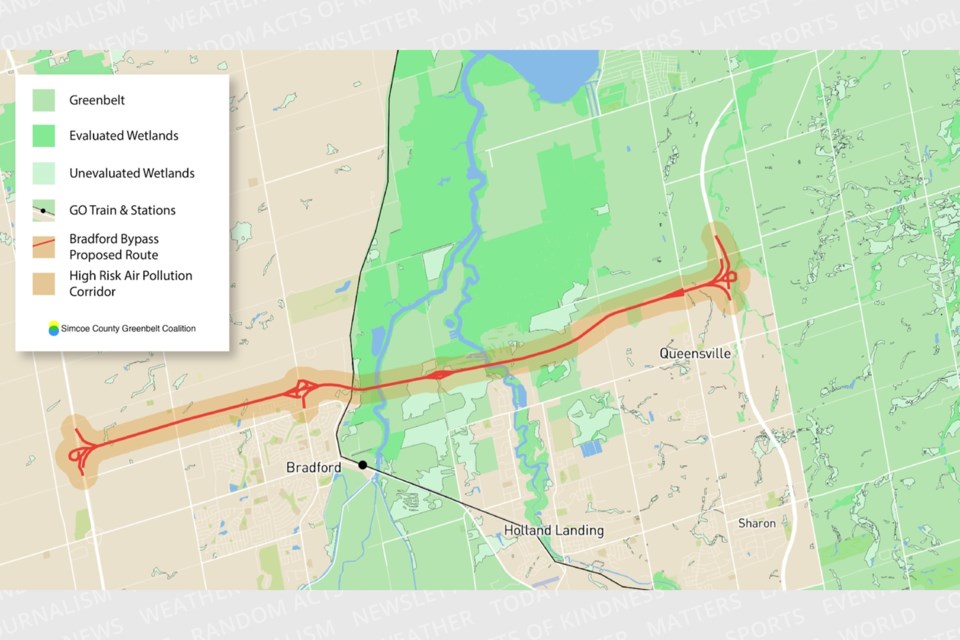NEWS RELEASE
SIMCOE COUNTY GREENBELT COALITION
*************************
As the window closes on public commenting on the Bradford Bypass, last week local groups educated interested residents at three town halls in York Region and Simcoe County. Attendees were consistently shocked at what they learned about the absence of protections for human and environmental health, proper process and transparency.
The project’s draft environmental impact assessment report outlines key impacts this project will have on the environment including damage to water quality in wells and groundwater, increased air pollution and loss of endangered species habitat. The report was released with a 30-day comment period which critics argue is too short considering the harmful impacts this highway will have.
This 576-page report is the final report required by the Ontario exemption Regulation 697/21 through which the province made up their own self approval rules for this highway. The purpose of this draft report is to solicit public input. The regulation requires this consultation. The final report must report on, and possibly respond to, issues raised by this consultation process. Thereafter, the MTO is authorized to commence construction of this unnecessary, highly environmentally intrusive, eight-lane highway.
Bill Foster, from F.R.O.G.S., has been involved in this project over several decades and feels this rush job is an insult to public consultation.
“Giving the public a scant 30 days to read and respond to a report they can neither print nor make notes on is highly offensive. Given the length of the report, the comment period should be significantly lengthened and the format of the published report should permit both printing and commenting as has been the case with all previous reports issued for consultation," he says. "The conclusions drawn in this report are scary and giving such a short time frame limits people’s ability to understand how this project will impact them. This is just a further indicator of the total lack of integrity of this entire process.”
The report did not include key studies that concerned citizens have been consistently asking for.
“There is no mention of understanding or studying impacts to Lake Simcoe. That was something seven municipalities around the lake asked for. Significant groundwater contamination concerns are acknowledged, but there are few solutions articulated or actions promised here. There is no cumulative health impact assessment to understand how traffic-related air pollution, known to increase risks of cancers, leukemia, heart and lung disease, will impact the communities surrounding the route. There is also no mention of the cumulative impacts on our climate from construction and higher rates of car travel on this highway. This report basically lists problems and is light on solutions, and that really worries me,” says Rescue Lake Simcoe Coalition executive director Claire Malcolmson.
The draft environmental impact assessment report shows the highway impacting the Lower Landing, a significant historical and archaeological site on the East Holland River. Although the report mentions that an updated report will include archaeological findings, there are still property owners near the history-rich Lower Landing that are receiving expropriation notifications. As stewards of these lands and water for time immemorial, additional time should be given to allow First Nation community members to fully digest the lengthy report.
Margaret Prophet, Simcoe County Greenbelt Coalition: “There are big gaps in this report. It is not enough to list harms and then proceed with the project business as usual. Thanks to the EA shortcuts legislated by this government, this is the type of end product we expect to see — a big report, with many unanswered questions, launched at a time when they know people aren’t paying attention and a short deadline to freeze out the public even more. If the goal is to merely check a box, then mission accomplished. If the goal was to inform and actually protect the people and the environment, then what we have here is a failure.”
*************************



